Abstract
The effects of diazepam (2.5 and 5 mg) and amylobarbitone sodium (50 and 100 mg) on performance and subjective effects were assessed in a group of twelve healthy subjects under standardised conditions. Treatments were administered orally at weekly intervals according to a balanced design and under double-blind conditions. The tests of performance most sensitive to drug effects in these healthy subjects were either prolonged and monotonous and gave the subject no feedback on performance, or required short term memory for efficient execution. Auditory vigilance was significantly impaired (P less than 0.05) between 45 min and 1 h 45 min after all drug treatments except amylobarbitone sodium (100 mg), compared with performance after lactose. At the same time false reports were significantly increased after amylobarbitone sodium (100 mg) compared with all other active drugs but not with lactose. These effects had disappeared 4-5 h post drug. Short term memory was impaired 1h 45 min after all treatments and impairment was dose related. No significant effects occurred 5h after treatment. Simple auditory reaction time was prolonged 2 h after the highest doses of amylobarbitone sodium and diazpam, and by amylobarbitone sodium (50 mg) 5 h 15 min after treatment. At this time the effects of diazepam had worn off. Digit symbol substitution was impaired by amylobarbitone sodium (50 and 100 mg), and diazepam (5 mg) after 2 h 45 minutes. No significant changes in visual search or tapping occurred after active drugs compared with lactose. Subjective ratings indicated both mental and motor impairment 2 h 45 min after all active preparations compared with scores after lactose though significant changes followed diazepam (2.5 mg) infrequently. Both correct detections and false reports in auditory vigilance tended to fall over the 6 separate days of testing, indicating an increase in caution. Visual search, short term memory, tapping and digit symbol substitution significantly improved with time, but there was no change in reaction time. From the limited information obtained by sampling blood at 3 and 6 h, no relationship between change in performance and plasma level was found in these subjects.
Full text
PDF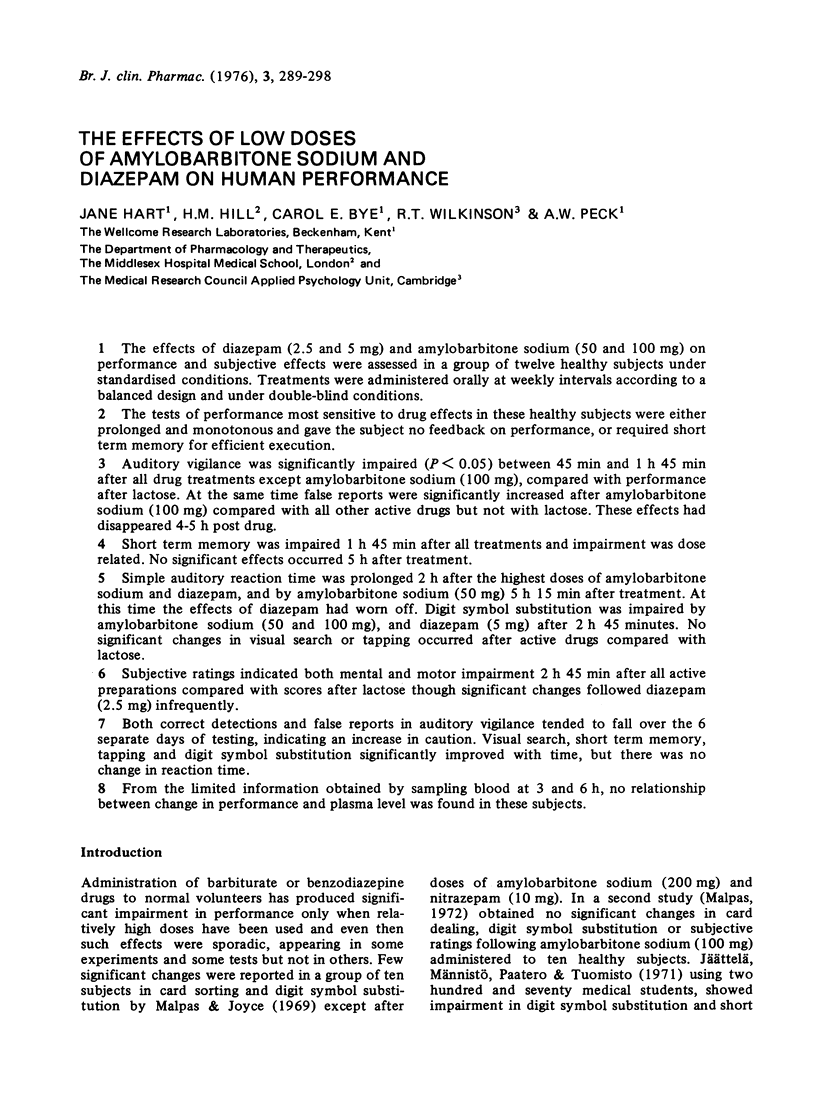
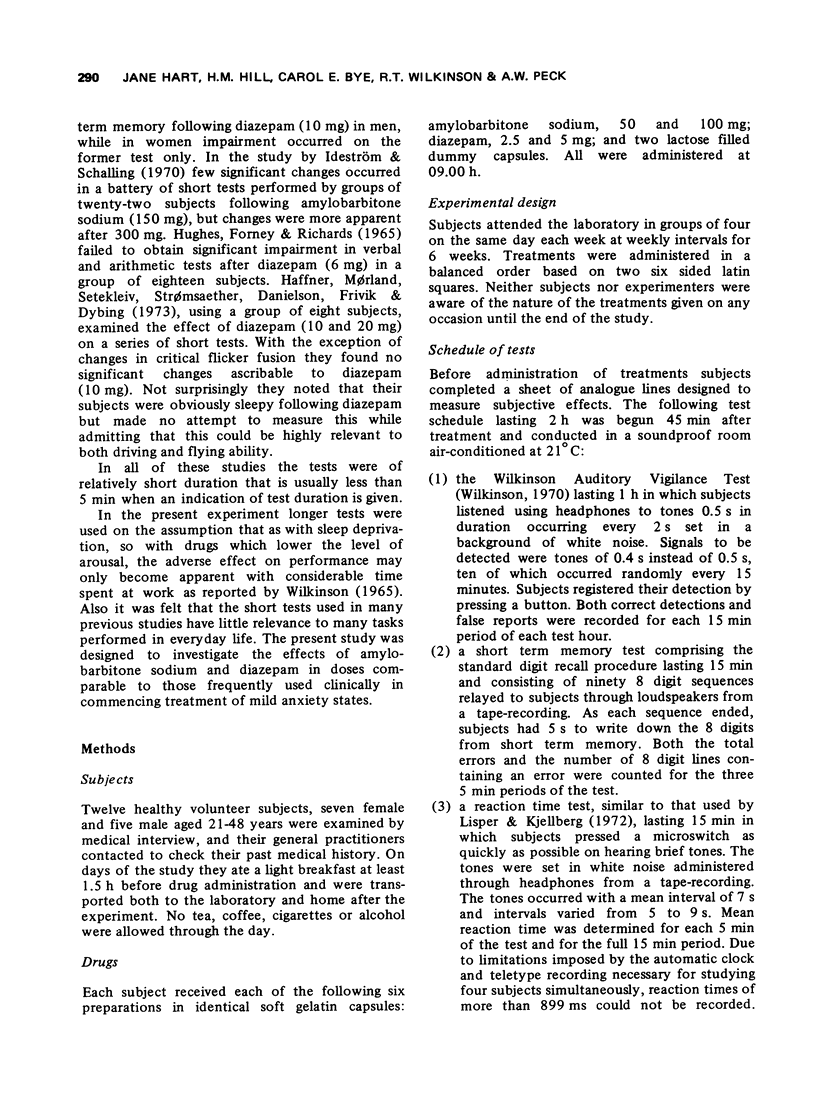
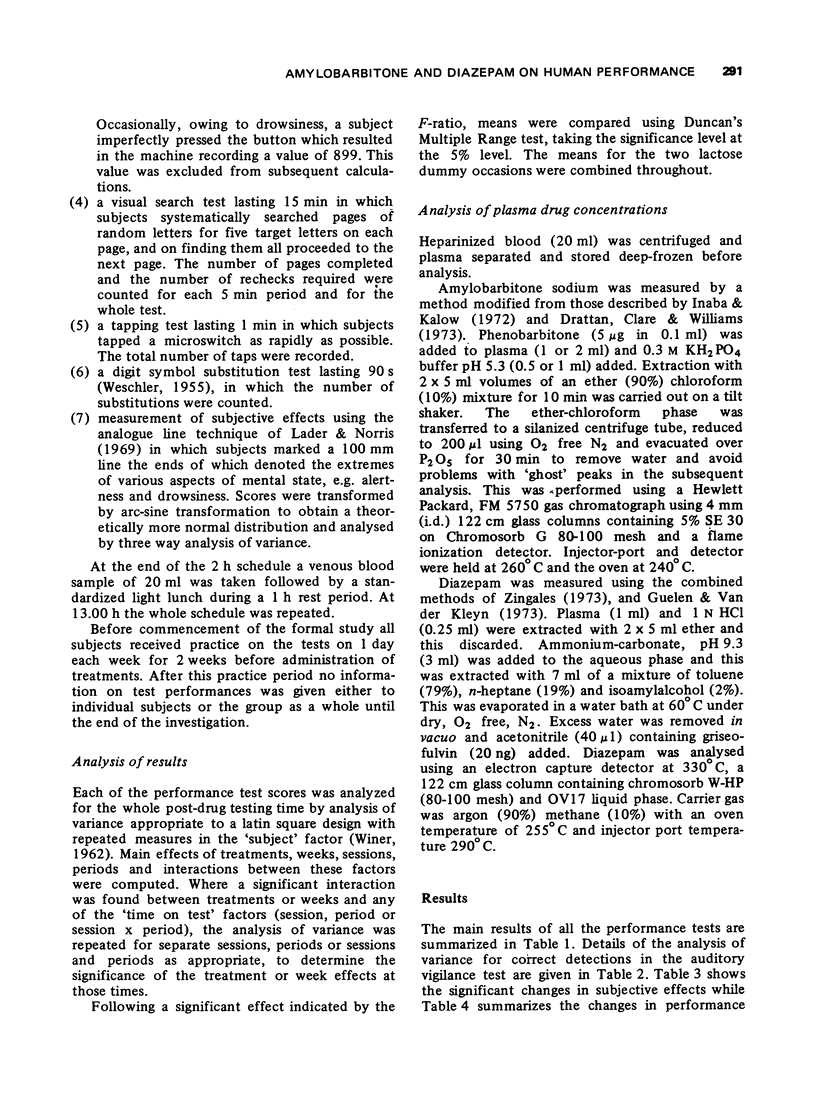

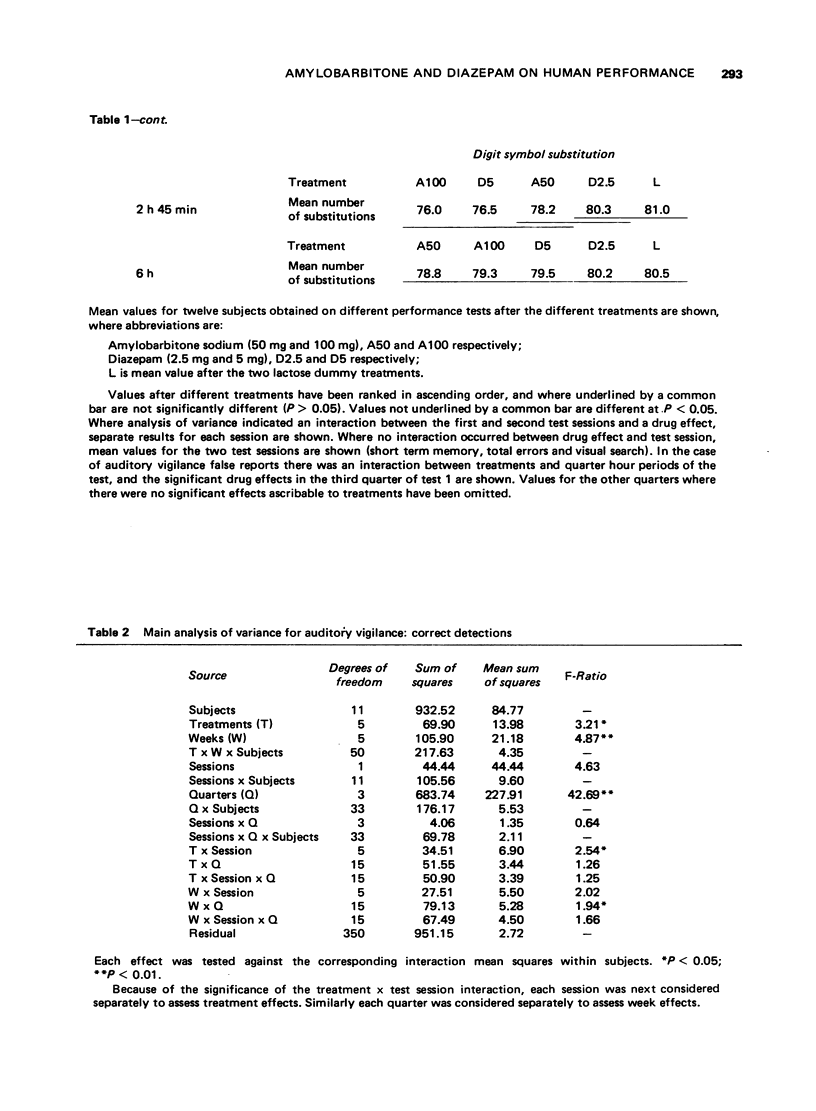
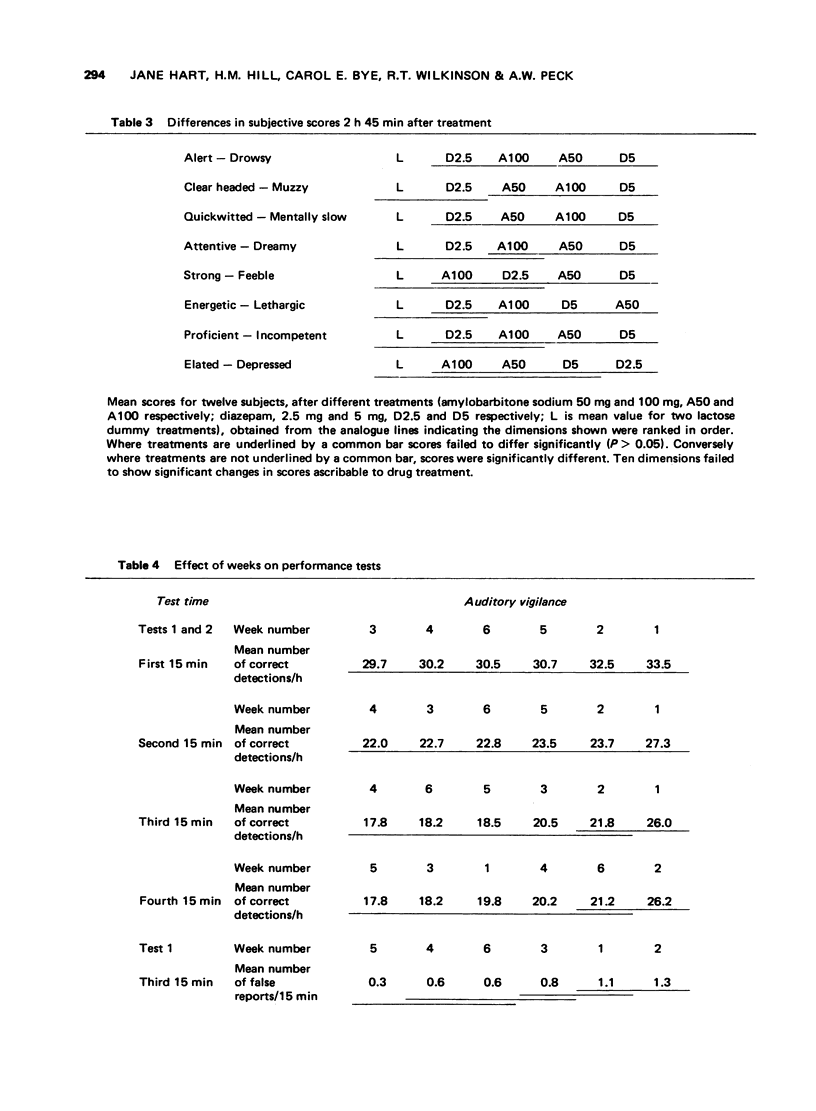
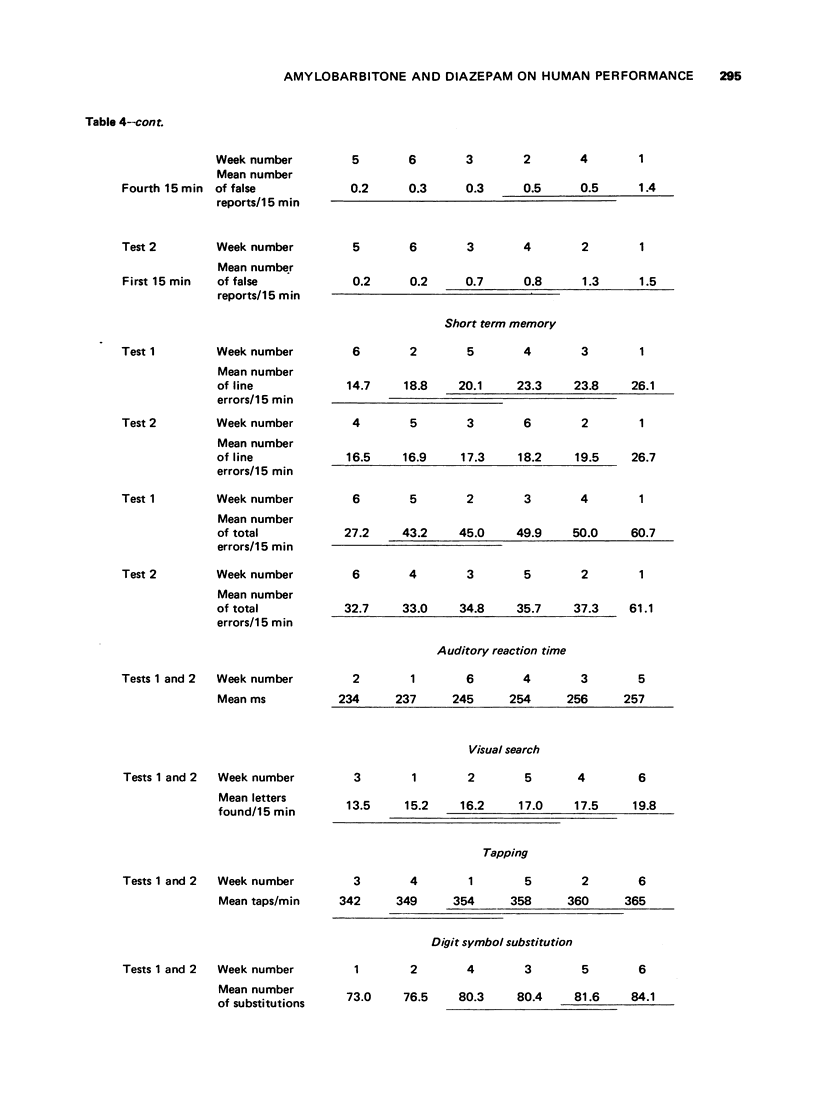
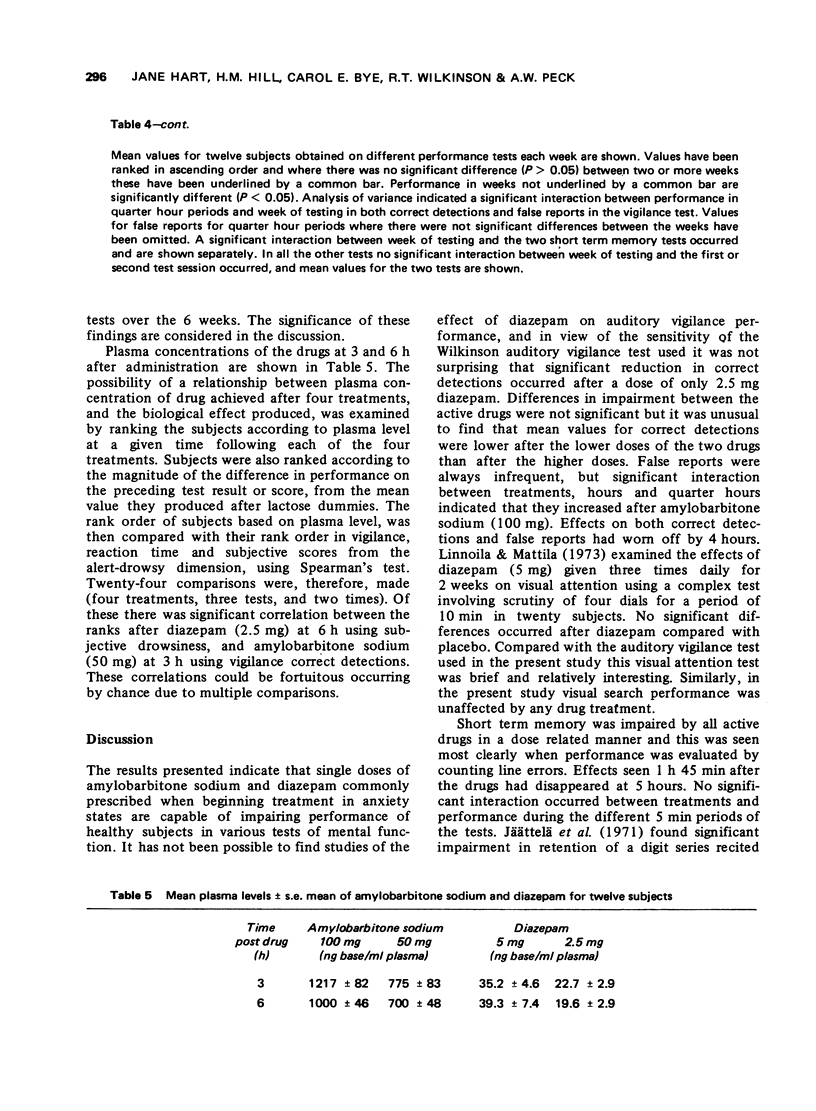
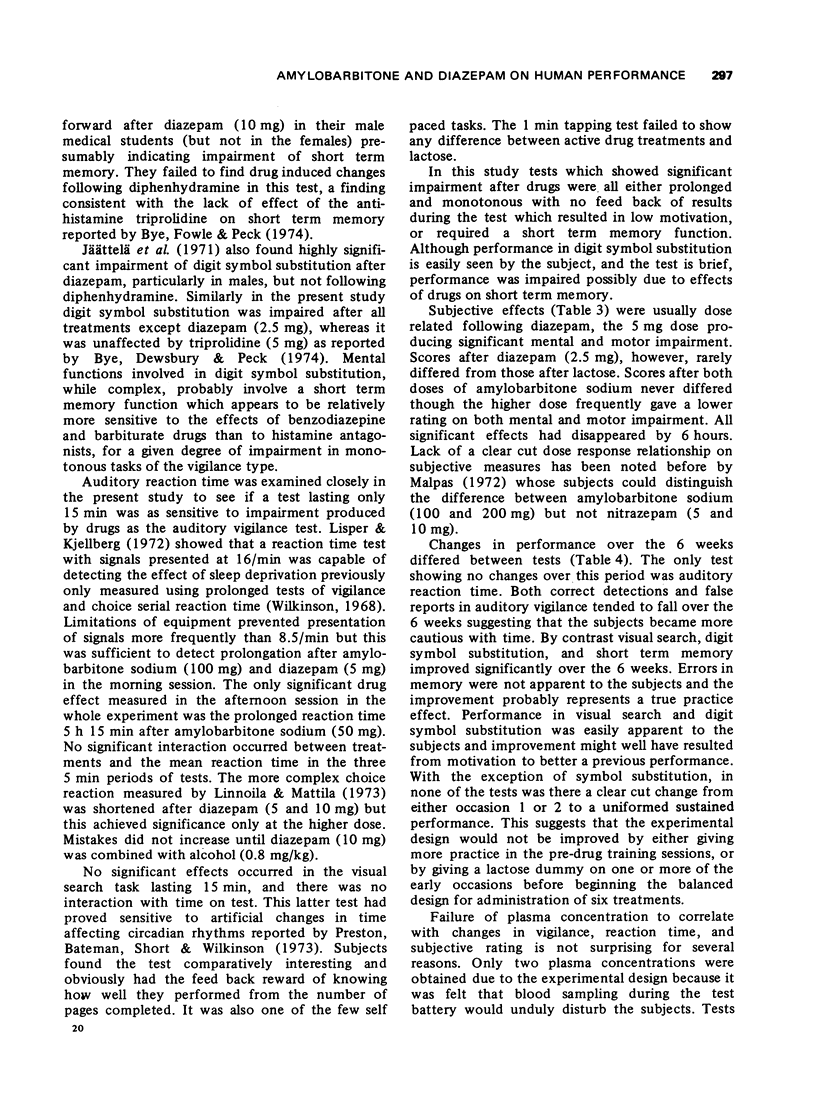
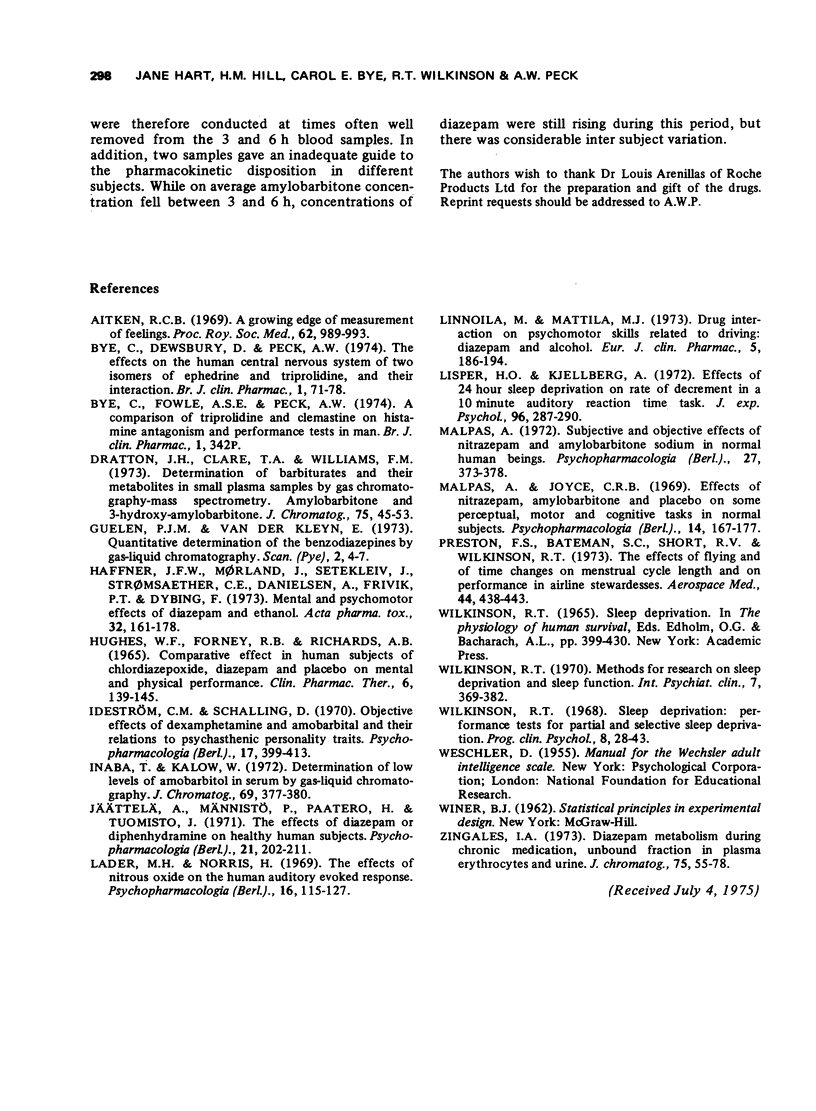
Selected References
These references are in PubMed. This may not be the complete list of references from this article.
- Aitken R. C. Measurement of feelings using visual analogue scales. Proc R Soc Med. 1969 Oct;62(10):989–993. [PMC free article] [PubMed] [Google Scholar]
- Draffan G. H., Clare R. A., Williams F. M. Determination of barbiturates and their metabolites in small plasma samples by gas chromatography-mass spectrometry. Amylorbarbitone and 3'-hydroxyamylobarbitone. J Chromatogr. 1973 Jan 3;75(1):45–53. doi: 10.1016/s0021-9673(01)83412-9. [DOI] [PubMed] [Google Scholar]
- HUGHES F. W., FORNEY R. B., RICHARDS A. B. COMPARATIVE EFFECT IN HUMAN SUBJECTS OF CHLORDIAZEPOXIDE, DIAZEPAM, AND PLACEBO ON MENTAL AND PHYSICAL PERFORMANCE. Clin Pharmacol Ther. 1965 Mar-Apr;6:139–145. doi: 10.1002/cpt196562139. [DOI] [PubMed] [Google Scholar]
- Haffner J. F., Morland J., Setekleiv J., Stromsaether C. E., Danielsen A., Frivik P. T., Dybing F. Mental and psychomotor effects of diazepam and ethanol. Acta Pharmacol Toxicol (Copenh) 1973;32(3):161–178. doi: 10.1111/j.1600-0773.1973.tb01461.x. [DOI] [PubMed] [Google Scholar]
- Inaba T., Kalow W. Determination of low levels of amobarbital in serum by gas-liquid chromatography. J Chromatogr. 1972 Jul 5;69(2):377–380. doi: 10.1016/s0021-9673(00)92912-1. [DOI] [PubMed] [Google Scholar]
- Jättelä A., Männistö P., Paatero H., Tuomisto J. The effects of diazepam or diphenhydramine on healthy human subjects. Psychopharmacologia. 1971;21(3):202–211. doi: 10.1007/BF00403859. [DOI] [PubMed] [Google Scholar]
- Lader M., Norris H. The effects of nitrous oxide on the human auditory evoked response. Psychopharmacologia. 1969;16(2):115–127. doi: 10.1007/BF00403614. [DOI] [PubMed] [Google Scholar]
- Lisper H. O., Kjellberg A. Effects of 24-hour sleep deprivation on rate of decrement in a 10-minute auditory reaction time task. J Exp Psychol. 1972 Dec;96(2):287–290. doi: 10.1037/h0033615. [DOI] [PubMed] [Google Scholar]
- Malpas A., Joyce C. R. Effects of nitrazepam, amylobarbitone and placebo on some perceptual, motor and cognitive tasks in normal subjects. Psychopharmacologia. 1969;14(3):167–177. doi: 10.1007/BF00404214. [DOI] [PubMed] [Google Scholar]
- Malpas A. Subjective and objective effects of nitrazepam and amylobarbitone sodium in normal human beings. Psychopharmacologia. 1972;27(4):373–378. doi: 10.1007/BF00429391. [DOI] [PubMed] [Google Scholar]
- Preston F. S., Bateman S. C., Short R. V., Wilkinson R. T. Effects of flying and of time changes on menstrual cycle length and on performance in airline stewardesses. Aerosp Med. 1973 Apr;44(4):438–443. [PubMed] [Google Scholar]
- Zingales I. A. Diazepam metabolism during chronic medication unbound fraction in plasma, erythrocytes and urine. J Chromatogr. 1973 Jan 3;75(1):55–78. doi: 10.1016/s0021-9673(01)83413-0. [DOI] [PubMed] [Google Scholar]


